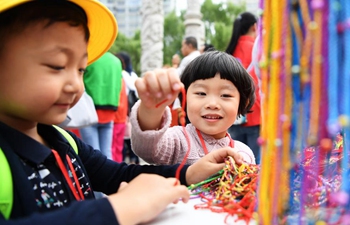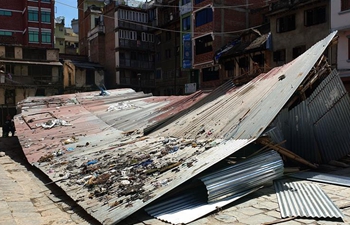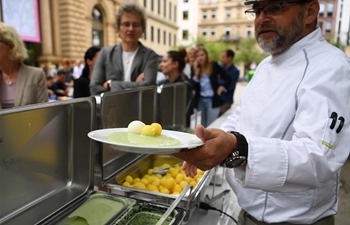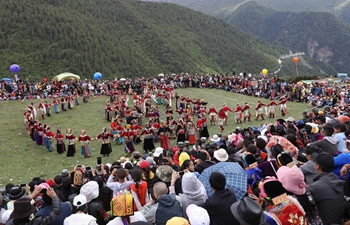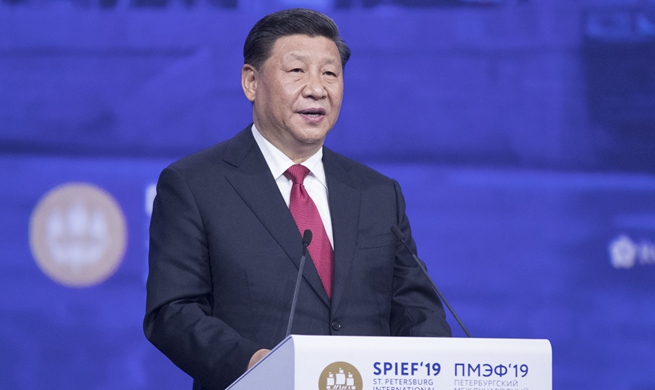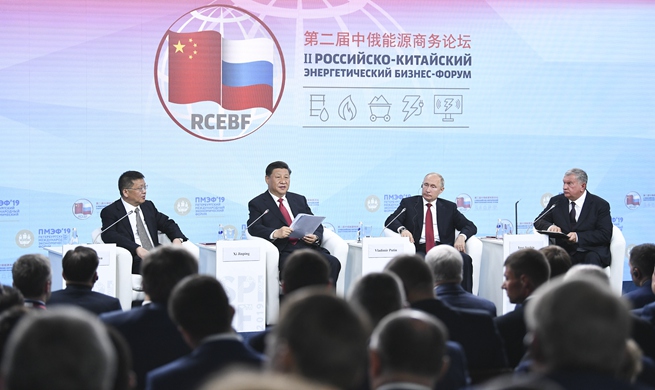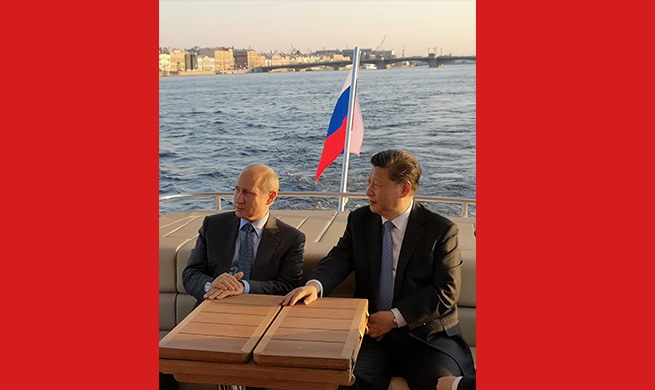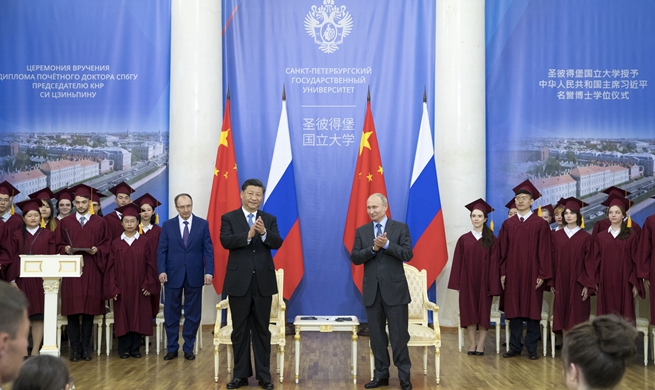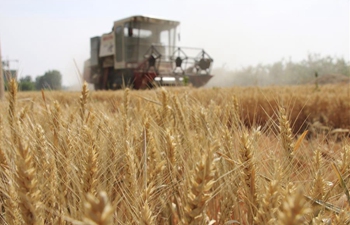FUZHOU, June 8 (Xinhua) -- At around 7 a.m., trucks loaded with tonnes of chicken bones, heads and intestines arrive at a waste disposal plant and dump the non-edible chicken parts into an underground container through a small hole.
"It's like filling oil tanks in a gas station," said Jiang Haijun, general manager of the plant in Guangze County, eastern China's Fujian Province.
The waste is then pumped into a chain of cauldrons and tubes in a separate room for high-temperature sterilization, steaming and drying. Five hours later, the waste is converted into fish feed.
The plant, which is able to treat 300 tonnes of chicken waste each day, is owned by Fujian Sunner Group, one of Asia's largest chicken breeders headquartered in Guangze. The poultry giant is the supplier of chicken products for KFC and McDonald's on the Chinese mainland.
Last year, Sunner's breeding farms in Guangze produced 300 million broilers along with 60,000 tonnes of waste, which were turned into 8,000 tonnes of animal feed by the plant.
The feed was sold at up to 13,000 yuan (about 1,880 U.S. dollars) per tonne, said Jiang.
"It's an eco-friendly way to treat poultry waste, let alone the profits," Jiang said. "We might risk polluting groundwater by landfill or spreading diseases by dumping untreated waste into fish ponds."
He added that a large amount of steam and hot water generated during the processing of chicken waste is later sent back to nearby poultry slaughterhouses and used for plucking chicken feathers.
Jiang's waste disposal facility offers a glimpse into Sunner's efforts to go waste-free.
About a five minutes' drive from the facility lies a cluster of plants that dispose of chicken blood, feathers and sewage produced by Sunner's farms. One plant turns chicken blood into protein powder, while another converts chicken feathers into animal feed.
Last year, a local biomass power plant used around 28 tonnes of chicken manure from Sunner's farms to generate 163 million kilowatt hours of electricity. Most of the electricity, worth more than 100 million yuan, was provided to the State Grid.
Fu Longrun, vice director of Guangze's bureau of ecology and environment, said Sunner's model of circular economy is indicative of Guangze's efforts to make full use of solid waste and build a zero-waste city.
Enterprises in Guangze have developed techniques to convert bamboo scraps into charcoal sticks and turn construction waste into manufactured sand.
Guangze is among the 11 cities and five areas in China selected by the Chinese government last month to pilot waste-free programs. Other participating cities include Shenzhen, downtown Chongqing and Sanya in Hainan Province.
About 10 billion tonnes of solid waste are produced annually in China, according to Du Xiangwan, an academician from the Chinese Academy of Engineering.
The amount of waste, if poorly handled, will be a huge burden for the environment and a waste of resources, said Du.
"The long-term goal is to minimize solid waste production, maximize the use of trash-recycled resources and ensure safe disposal," Du said.




